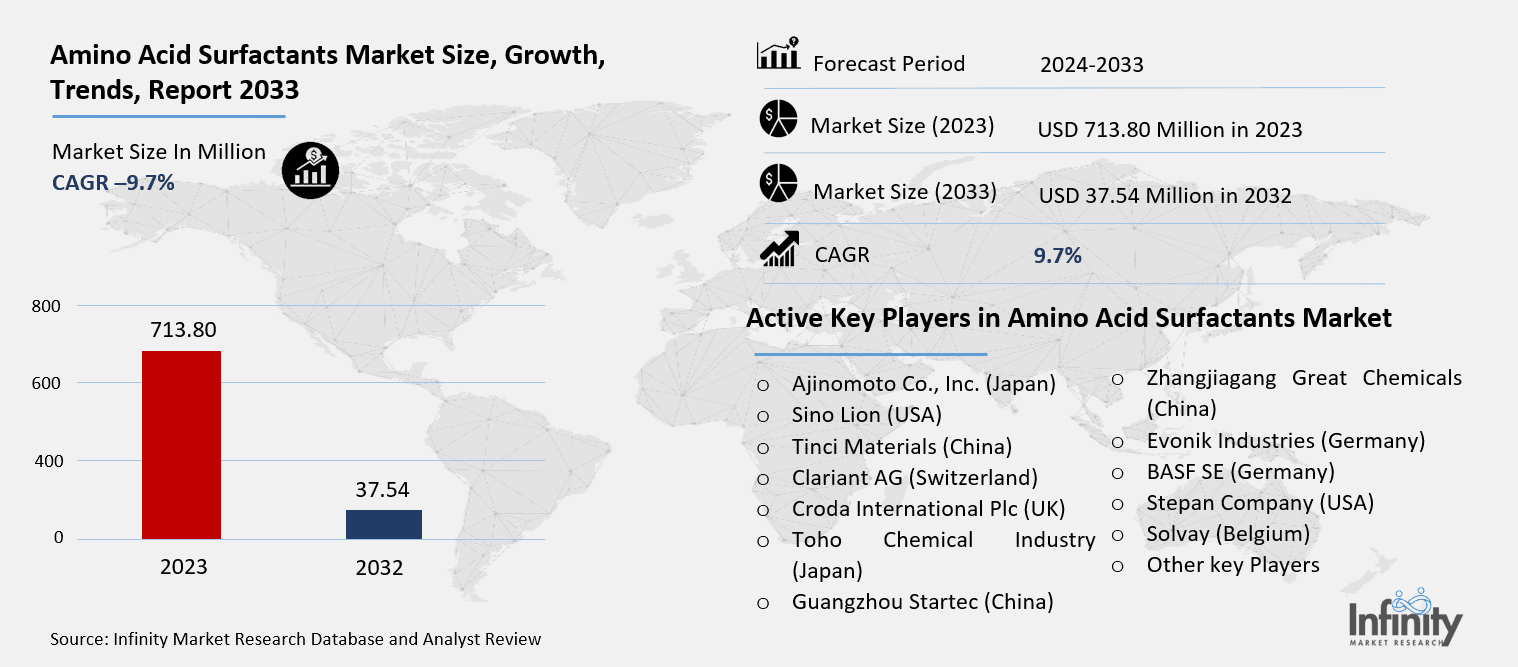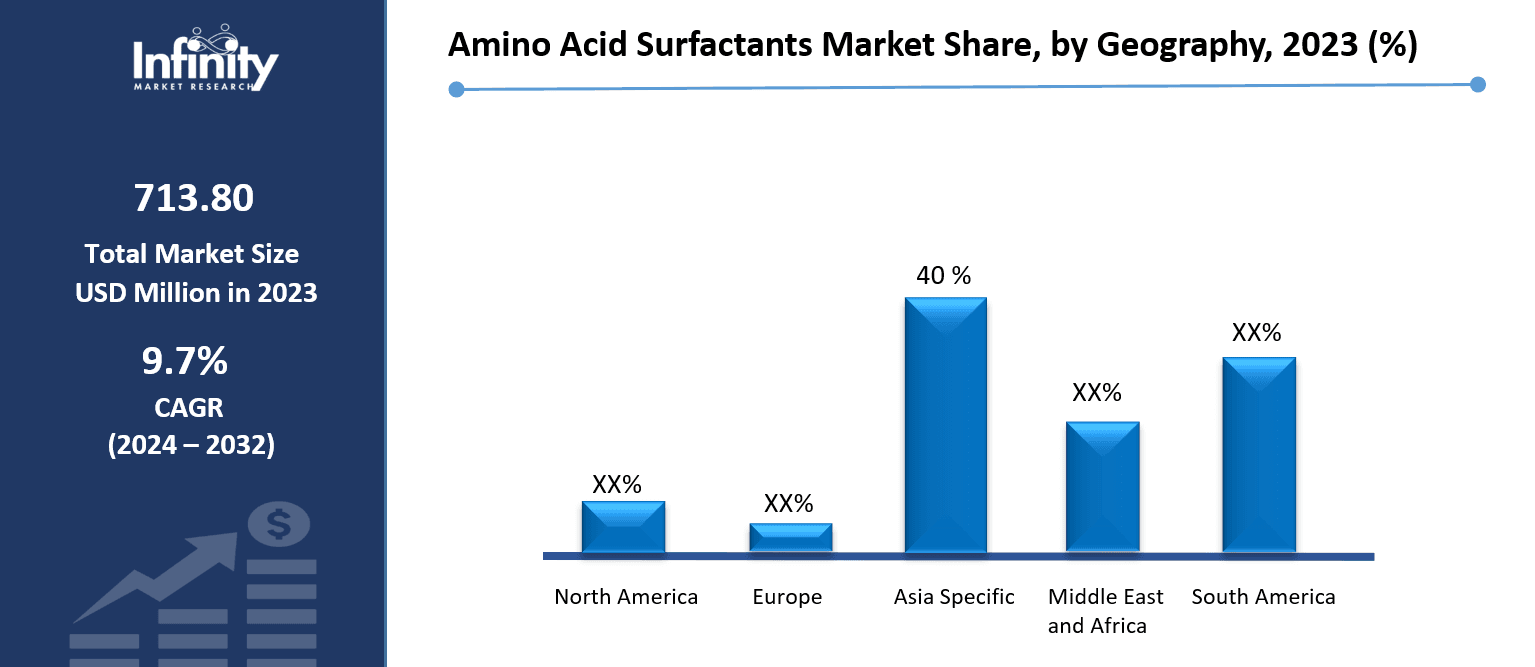
🔐 Secure Payment Guaranteed
Safe checkout with trusted global payment methods.
🌟 Why Choose Infinity Market Research?
At Infinity Market Research, we dont just deliver data — we deliver clarity, confidence, and competitive edge.
In a world driven by insights, we help businesses unlock the infinite potential of informed decisions.
Here why global brands, startups, and decision-makers choose us:
Industry-Centric Expertise
With deep domain knowledge across sectors — from healthcare and technology to manufacturing and consumer goods — our team delivers insights that matter.
Custom Research, Not Cookie-Cutter Reports
Every business is unique, and so are its challenges. Thats why we tailor our research to your specific goals, offering solutions that are actionable, relevant, and reliable.
Data You Can Trust
Our research methodology is rigorous, transparent, and validated at every step. We believe in delivering not just numbers, but numbers that drive real impact.
Client-Centric Approach
Your success is our priority. From first contact to final delivery, our team is responsive, collaborative, and committed to your goals — because you re more than a client; you re a partner.
Recent Reports
Global Myopia Control Lenses Market Report 2025-33
Hyaluronic Acid-based Dermal Fillers Market Report
Amino Acid Surfactants Market
Amino Acid Surfactants Market Global Industry Analysis and Forecast (2024-2032)By Type(Glutamic Acid-Based Surfactants, Glycine-Based Surfactants, Sarcosine-Based Surfactants, Alanine-Based Surfactants, Others),By Application( Personal Care & Cosmetics, Household Cleaning, Industrial & Institutional Cleaning, Pharmaceuticals, Others),By Form( Liquid, Powder),By End-User Industry( Personal Care & Cosmetics, Healthcare, Food & Beverage, Textiles, Others) and Region
Feb 2025
Chemicals and Materials
Pages: 138
ID: IMR1819
Amino Acid Surfactants Market Synopsis
Amino Acid Surfactants Market Size Was Valued at USD 713.80 Million in 2023, and is Projected to Reach USD 37.54 Million by 2032, Growing at a CAGR of 9.7% From 2024-2032.
Made from natural amino acids and fatty acids, Amino Acid surfactants are gentle surfactants that biodegradable. Personal care, home cleaning, and medicinal uses all benefit from their low irritation, great skin compatibility, and environmental friendliness. Widely employed in sulfate-free formulations for shampoos, facial cleansers, body washes, and other skincare products, these surfactants show good foaming, emulsifying, and cleansing action.
Growing consumer knowledge of the advantages of mild and biodegradable surfactants has helped the amino acid surfactants industry to become rather popular recently. Generally generated from natural sources, these surfactants provide better skin-friendliness than standard petrochemical-based surfactants. Their demand has been driven in especially the personal care and cosmetics sectors by their capacity to offer mild cleansing while preserving skin hydrated. Amino acid surfactants are becoming more and more sought for by producers trying to satisfy a more sustainability-conscious customer base as consumers lean toward sulfate-free and environmentally friendly formulations.
Beyond personal care, the industry is seeing growth in domestic cleaning, industrial and institutional cleaning, and pharmaceuticals among other end-use sectors. Amino acid surfactants have become a good substitute for synthetic counterparts as strict environmental rules drive sectors toward sustainable raw sources. Thanks to its strong cosmetic sector and growing demand for sulfate-free goods, the Asia-Pacific area—especially China and Japan—has become a major production and consumption center. Moreover, continuous research and development initiatives concentrate on improving the functional characteristics of these surfactants so increasing their uses in several sectors.
Amino Acid Surfactants Market Outlook, 2023 and 2032: Future Outlook

Amino Acid Surfactants Market Trend Analysis
Trend: Rising Demand for Sulfate-Free and Natural Personal Care Products
Demand for amino acid surfactants has been greatly raised as the personal care and cosmetics sector moves strongly toward sulfate-free and natural formulations. Customers are starting to know more and more the possible irritants in conventional surfactants like sodium lauryl sulfate (SLS) and sodium laureth sulfate (SLES). This has resulted in growing taste for moderate, plant-based surfactants less likely to aggravate skin irritation and dryness. Gentle yet powerful, amino acid surfactants have grown to be a preferred choice in formulations for baby care, skincare, and haircare products.
Many top cosmetic companies are reformulating their products to cut sulfates and use naturally occurring surfactants as the clean beauty movement picks steam. As customers grow more health-conscious, this tendency is not limited to developed markets but also expanding throughout rising economies. Moreover, regulatory authorities are pushing producers to make investments in sustainable surfactant solutions and utilize safer, non-toxic chemicals, therefore driving the expansion of amino acid surfactants on the worldwide market.
Opportunity: Expanding Applications in Pharmaceutical and Medical Sectors
The pharmaceutical and medical sectors present a promising opportunity for the amino acid surfactants market, particularly in drug delivery systems and medical cleansing formulations. These surfactants have shown excellent biocompatibility and safety profiles, making them suitable for pharmaceutical-grade emulsions, topical drug formulations, and wound care solutions. Their mild cleansing properties make them ideal for antiseptic and medicated skin cleansers, which are increasingly in demand due to growing hygiene awareness.
Additionally, research is being conducted to explore the role of amino acid surfactants in enhancing drug solubility and bioavailability. Some formulations leverage these surfactants as stabilizers in protein-based drug delivery, ensuring better absorption and efficacy. As the pharmaceutical industry continues to expand with innovations in dermatological treatments and specialty drugs, the adoption of amino acid surfactants is expected to witness steady growth.
Driver: Rising Consumer Preference for Eco-Friendly and Biodegradable Surfactants
The growing need for environmentally acceptable, biodegradable surfactants is a main driver of the amino acid surfactant industry. Concerning both environmental damage and gradual degradation, traditional surfactants—especially petroleum-based ones—cause serious questions for both consumers and regulatory agencies. Being naturally produced and readily biodegradable, amino acid surfactants offer a sustainable substitute that fits with world sustainability targets.
Stiffer rules on the use of synthetic surfactants by governments and environmental authorities all around are driving producers toward greener substitutes. Particularly the beauty and personal care sectors have responded to this change by using ecologically friendly formulations that are also quite successful. Further assisted by developments in green chemistry and sustainable raw material procurement, this change in consumer choice is predicted to keep pushing the expansion of amino acid surfactants.
Restraints: High Production Costs and Limited Raw Material Availability
Amino acid surfactants have significant manufacturing costs relative to conventional surfactants, notwithstanding their increasing popularity. Specialized processing methods and raw ingredients sometimes more costly than petrochemical-based substitutes help to synthesize these surfactants. This cost element limits their general acceptance, especially in sectors sensitive to prices where traditional surfactants predominate because of their economy.
Furthermore a limiting element can be the availability of good natural supplies of amino acids. Further adding to the cost are sourcing amino acids from non-GMO and sustainable sources, which makes it challenging for some producers to increase manufacturing at reasonable rates. Therefore, even if the market for amino acid surfactants keeps growing, cost restrictions could prevent them from becoming mainstream consumer items, hence requiring developments in affordable manufacturing processes
Amino Acid Surfactants Market Segment Analysis
Amino Acid Surfactants Market Segmented on the basis of type, form, application and end user.
By Type
o Glutamic Acid-Based Surfactants
o Glycine-Based Surfactants
o Sarcosine-Based Surfactants
o Alanine-Based Surfactants
o Others
By Application
o Personal Care & Cosmetics
o Household Cleaning
o Industrial & Institutional Cleaning
o Pharmaceuticals
o Others
By Region
o North America (U.S., Canada, Mexico)
o Eastern Europe (Bulgaria, The Czech Republic, Hungary, Poland, Romania, Rest of Eastern Europe)
o Western Europe (Germany, UK, France, Netherlands, Italy, Russia, Spain, Rest of Western Europe)
o Asia Pacific (China, India, Japan, South Korea, Malaysia, Thailand, Vietnam, The Philippines, Australia, New-Zealand, Rest of APAC)
o Middle East & Africa (Turkey, Bahrain, Kuwait, Saudi Arabia, Qatar, UAE, Israel, South Africa)
o South America (Brazil, Argentina, Rest of SA)
By Type, Glutamic Acid-Based Surfactants segment is expected to dominate the market during the forecast period
The amino acid utilized in their formulation determines the many forms of Amino Acid Surfactants. Ideal for high-end personal care applications, glutamic Acid-Based Surfactants are among the most often utilized since their better foaming qualities and skin friendliness. Commonly found in facial cleansers and baby care products, glycine-based surfactants are renowned for their great cleaning and mildness. Value for industrial and pharmaceutical uses comes from sarcosine-based surfactants' antibacterial qualities. While the Others group comprises less well-known derivatives with niche uses, Alanine-Based Surfactants offer good stability and foaming qualities.
Depending on the use, each kind has different advantages; their demand differs depending on industrial necessity. Factors like formulation criteria, target consumer preferences, and regulatory concerns mostly define the type of surfactant to use.
By Application, Personal Care & Cosmetics segment expected to held the largest share
Amino acid surfactants are used extensively in skincare and haircare products, hence the Personal Care & Cosmetics segment rules the market. Their acceptance has been much enhanced by the rising market for sulfate-free formulations. These surfactants also help household cleaning products since their mild yet powerful cleaning qualities fit sensitive skin and environmentally aware consumers.
Particularly in specialist formulations needing biodegradability and safety, the segments of industrial and institutional cleaning and pharmaceuticals are becoming areas where amino acid surfactants are finding momentum. Niche uses such textile manufacturing and agriculture where sustainable surfactants are increasingly favored fall under the Others category.
Amino Acid Surfactants Market Regional Insights
Asia Pacific is Expected to Dominate the Market Over the Forecast period
Driven by great demand from the personal care and cosmetics sectors in China, Japan, and South Korea, Asia-Pacific is the dominating region in the amino acid surfactants market. Rising consumer awareness of natural and organic beauty products has resulted in notable increase in sulfate-free formulations, hence amino acid surfactants are a favorite choice among producers.
Major surfactant manufacturers in the area also profit from cheap production and plenty of raw materials. Asia-Pacific is likely to remain leading in the worldwide amino acid surfactants market with growing government backing for sustainable products and a robust cosmetics export sector.
Amino Acid Surfactants Market Share, by Geography, 2023 (%)

Active Key Players in the Amino Acid Surfactants Market
o Ajinomoto Co., Inc. (Japan)
o Sino Lion (USA)
o Tinci Materials (China)
o Clariant AG (Switzerland)
o Croda International Plc (UK)
o Toho Chemical Industry (Japan)
o Guangzhou Startec (China)
o Zhangjiagang Great Chemicals (China)
o Evonik Industries (Germany)
o BASF SE (Germany)
o Stepan Company (USA)
o Solvay (Belgium)
o Other key Players
Global Amino Acid Surfactants Market Scope
|
Global Amino Acid Surfactants Market | |||
|
Base Year: |
2023 |
Forecast Period: |
2024-2032 |
|
Historical Data: |
2017 to 2023 |
Market Size in 2023: |
USD 713.80 Million |
|
Forecast Period 2024-32 CAGR: |
9.7% |
Market Size in 2032: |
USD 37.54 Million |
|
Segments Covered: |
By Type |
· Glutamic Acid-Based Surfactants · Glycine-Based Surfactants · Sarcosine-Based Surfactants · Alanine-Based Surfactants · Others | |
|
By Application |
· Personal Care & Cosmetics · Household Cleaning · Industrial & Institutional Cleaning · Pharmaceuticals · Others | ||
|
By Region |
· North America (U.S., Canada, Mexico) · Eastern Europe (Bulgaria, The Czech Republic, Hungary, Poland, Romania, Rest of Eastern Europe) · Western Europe (Germany, UK, France, Netherlands, Italy, Russia, Spain, Rest of Western Europe) · Asia Pacific (China, India, Japan, South Korea, Malaysia, Thailand, Vietnam, The Philippines, Australia, New-Zealand, Rest of APAC) · Middle East & Africa (Turkey, Bahrain, Kuwait, Saudi Arabia, Qatar, UAE, Israel, South Africa) · South America (Brazil, Argentina, Rest of SA) | ||
|
Key Market Drivers: |
· Rising Consumer Preference for Eco-Friendly and Biodegradable Surfactants | ||
|
Key Market Restraints: |
· High Production Costs and Limited Raw Material Availability | ||
|
Key Opportunities: |
· Expanding Applications in Pharmaceutical and Medical Sectors | ||
|
Companies Covered in the report: |
· Ajinomoto Co., Inc. (Japan), Sino Lion (USA), Tinci Materials (China), Clariant AG (Switzerland), Croda International Plc (UK), Toho Chemical Industry (Japan), Guangzhou Startec (China), Zhangjiagang Great Chemicals (China) and Other Major Players. | ||
📘 Frequently Asked Questions
1. What would be the forecast period in the Amino Acid Surfactants Market research report?
Answer: The forecast period in the Amino Acid Surfactants Market research report is 2024-2032.
2. Who are the key players in the Amino Acid Surfactants Market?
Answer: Ajinomoto Co., Inc. (Japan), Sino Lion (USA), Tinci Materials (China), Clariant AG (Switzerland), Croda International Plc (UK), Toho Chemical Industry (Japan), Guangzhou Startec (China), Zhangjiagang Great Chemicals (China) and Other Major Players.
3. What are the segments of the Amino Acid Surfactants Market?
Answer: The Amino Acid Surfactants Market is segmented into Type,Form, Application, End User and region. By Type, the market is categorized into Glutamic Acid-Based Surfactants, Glycine-Based Surfactants, Sarcosine-Based Surfactants, Alanine-Based Surfactants, Others. By Application, the market is categorized into Personal Care & Cosmetics, Household Cleaning, Industrial & Institutional Cleaning, Pharmaceuticals, Others. By Form, the market is categorized into Liquid, Powder. By End-User Industry, the market is categorized into Personal Care & Cosmetics, Healthcare, Food & Beverage, Textiles, Others. By region, it is analyzed across North America (U.S.; Canada; Mexico), Eastern Europe (Bulgaria; The Czech Republic; Hungary; Poland; Romania; Rest of Eastern Europe), Western Europe (Germany; UK; France; Netherlands; Italy; Russia; Spain; Rest of Western Europe), Asia-Pacific (China; India; Japan; Southeast Asia, etc.), South America (Brazil; Argentina, etc.), Middle East & Africa (Saudi Arabia; South Africa, etc.).
4. What is the Amino Acid Surfactants Market?
Answer: Made from natural amino acids and fatty acids, Amino Acid surfactants are gentle surfactants that biodegradable. Personal care, home cleaning, and medicinal uses all benefit from their low irritation, great skin compatibility, and environmental friendliness. Widely employed in sulfate-free formulations for shampoos, facial cleansers, body washes, and other skincare products, these surfactants show good foaming, emulsifying, and cleansing action.
5. How big is the Amino Acid Surfactants Market?
Answer: Amino Acid Surfactants Market Size Was Valued at USD 713.80 Million in 2023, and is Projected to Reach USD 37.54 Million by 2032, Growing at a CAGR of 9.7% From 2024-2032.


🔐 Secure Payment Guaranteed
Safe checkout with trusted global payment methods.
🌟 Why Choose Infinity Market Research?
- Accurate & Verified Data:Our insights are trusted by global brands and Fortune 500 companies.
- Complete Transparency:No hidden fees, locked content, or misleading claims — ever.
- 24/7 Analyst Support:Our expert team is always available to help you make smarter decisions.
- Instant Savings:Enjoy a flat $1000 OFF on every report.
- Fast & Reliable Delivery:Get your report delivered within 5 working days, guaranteed.
- Tailored Insights:Customized research that fits your industry and specific goals.




